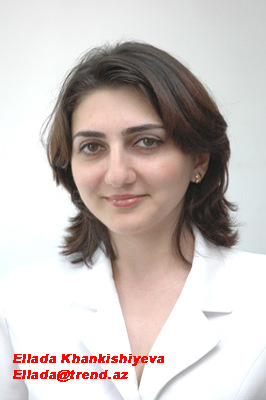Following two-year researches in the sphere of social policy, the draft law on Targeted State Social Assistance, at least, was passed to the consideration of the parliament. The necessity for the development of such a law came a long ago, especially, when the complaints on the size of social payments appeared. Then the state officers alluded to the development of a targeted social aid system, which envisaged rise in the benefits after cut in the number of beneficiaries. Too much has been spoken about it even on the eve of increase of energy prices. In his numerous statements Azerbaijani Finance Minister Avaz Alakbarov noted the necessity for providing targeted grants-in-aid for low-income layers of people, prior to correcting the prices.
In the end, the grants-in-aid covered 590,000 people comprised of 17 groups of population, more imposed to poverty risk. These were people earlier regarded as vulnerable layers and received compensations in exchange to cancellation of communal and transport services in 2002. They were the disabled, veterans, war heroes, fighters’ widows, orphans and members of shehid (martyr) families, refugees and internally displaced persons.
So, the rights for compensation are defined through status of people, and are not linked with the financial status of beneficiaries. Respectively, the existing social security system has restricted opportunities on redistribution of resources in favor of more needy people. The report on the implementation of the State Program on Poverty Reduction indicates the poor layers of people less benefit the state social assistance.
Table. Distribution of social benefits on decile groups, РІ %
|
Decile groups |
State benefits |
Privileges |
|
1 |
11,0 |
6,9 |
|
2 |
10,8 |
7,8 |
|
3 |
11,8 |
11,0 |
|
4 |
11,9 |
11,6 |
|
5 |
11,1 |
9,6 |
|
6 |
9,6 |
9,6 |
|
7 |
8,6 |
6,6 |
|
8 |
9,9 |
12,7 |
|
9 |
8,4 |
10,4 |
|
10 |
6,9 |
13,8 |
Source: Annual report on poverty reduction, 2005
Thus, special weight of privileges, that falls on relatively weal layers, exceeds twice the similar figure calculated for less weal layers of people. Though in case with state benefits the special weight of low-income families is comparably more, their distribution cannot be regarded as fair. Despite functioning of 35 different type of compensation payments in the country, none of them is of targeted character and in its current amount still unable to justify itself in covering the needs. Meanwhile, the government annually spends tremendous funds in equal proportions and it is equally used both by poor and wealthy.
Results of researches carried out by the Ministry of Labor and Social Security in two regions of
The Law on Targeted Social Aid is directed at removal of such nuances of unfair distribution of social assistance. The law includes a notion of �criteria of need’, which will be defined depending on the living minimum. The living minimum will be calculated differently for different social groups. Thus, only people with average monthly incomes yielding the living minimum not depending on them (unemployment, loss of bread winner, loss of work ability) will receive benefits. At present the living minimum comprises 194,000 manats. Social aid to needy people will be allocated by relevant bodies of the executive power and paid fully at the expense of the public budget.
However, without exact information it is really difficult to clarify who is mostly needs social security, who holds false documents. With this respect, after the enactment of the law there will appear a new institute of social employees, who will visit the houses and collects data on incomes and expenses of every family.
But there is also a national peculiarity, which excites concerns in terms of realization of the project. This is a probability of a subjective approach by social employees to defining the list of needy people. So, it is necessary to hold monitoring while designing a mechanism on targeted social benefits to exclude all manifestations of corruption while defining the targeted groups. The mechanism should be transparent, subjected to open and clear category of people. The responsibility for observation of people in need of social assistance should be high. The key issue is linked with fair distribution of grants-in-aid. The development of a targeted principle is not an east task, requiring several years for revealing those in need of family assistance. The successful outcomes of the mechanism gained world recognition as an anti-poverty mean.






